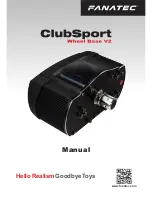
3.11 Braking Resistor
Dynamic braking (DB) helps bring the motor to a smooth and rapid stop when working with high inertia loads. Regeneration
occurs as the drive lowers the motor frequency with high inertia. When the regeneration flows back into the DC bus capacitors,
an overvoltage situation occurs. A braking resistor prevents these overvoltage faults.
NOTICE: Do not allow unqualified personnel to use the product. Failure to comply could result in damage to the drive or braking circuit.
Carefully review the braking resistor instruction manual when connecting a braking option to the drive.
Note:
The braking circuit must be sized properly in order to dissipate the power required to decelerate the load in the desired time. Ensure that
the braking circuit can dissipate the energy for the set deceleration time prior to running the drive.
NOTICE: Use a thermal overload relay or over-temperature contact to interrupt input power to the drive if the braking resistor overheats. In
the event of a possible thermal overload, the relay triggers the input contactor and prevents the braking resistor from burning up.
u
Installation
WARNING! Fire Hazard. The braking resistor connection terminals are B1 and B2. Do not connect a braking resistor directly to any other
terminals. Improper wiring connections could result in death or serious injury by fire. Failure to comply may result in damage to the braking
circuit or drive.
NOTICE: Connect braking resistors to the drive as shown in the I/O wiring examples. Improperly wiring braking circuits could result in damage
to the drive or equipment.
n
Installation Procedure
1.
Disconnect all electrical power to the drive and wait at least five minutes before servicing the drive and any connected
components.
2.
Remove drive front cover.
3.
Use a voltmeter to verify that voltage is disconnected from incoming power terminals and that the DC bus no longer
holds a charge.
Power
supply
Thermal
relay
Motor
Drive
Braking resistor
Thermal relay switch for
external braking resistor
Fault contact
MC
SA
SA
SA
MC
ON
MC
OFF
THRX
THRX
TRX
MC
TRX
MA MC
R/L1 B1
B2
S/L2
T/L3
U/T1
V/T2
W/T3
MCCB
Figure 3.28 Connecting a Braking Resistor
4.
Follow manufacturer instructions to connect the resistor unit to the drive using proper wire gauge according to local
electrical codes.
Power leads for the remote mount resistors generate high levels of electrical noise; group these signal leads
separately.
5.
Mount the resistor unit on a noncombustible surface. Maintain minimum side and top clearances according to resistor
manufacturer instructions.
WARNING! Fire Hazard. Do not use improper combustible materials. Failure to comply could result in death or serious injury by
fire. Attach the drive or braking resistors to metal or other noncombustible material.
6.
Reinstall drive covers and resistor covers, if provided.
7.
Set parameter L3-04 = “0” or “3” to disable stall prevention during deceleration.
Set parameter L8-01 to “1” to enable overheat protection when using a heatsink-mounted braking resistor option.
Set L8-01 = “0” for other braking resistor types.
Set parameter L3-04 = “3” to generate the shortest possible deceleration time.
3.11 Braking Resistor
72
YASKAWA ELECTRIC SIEP C710606 18F YASKAWA AC Drive – V1000 Technical Manual















































